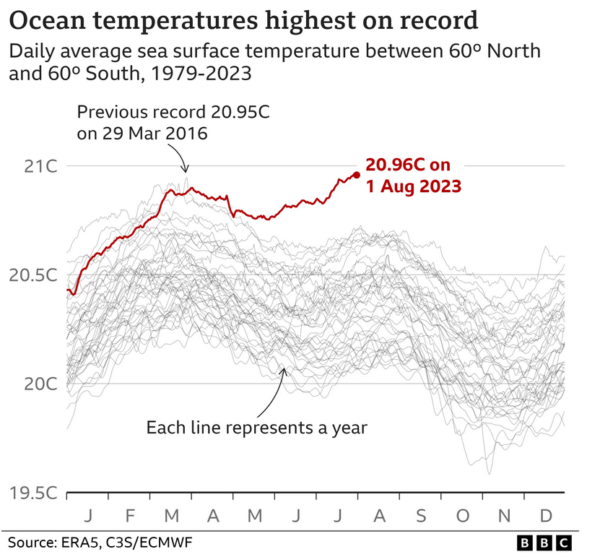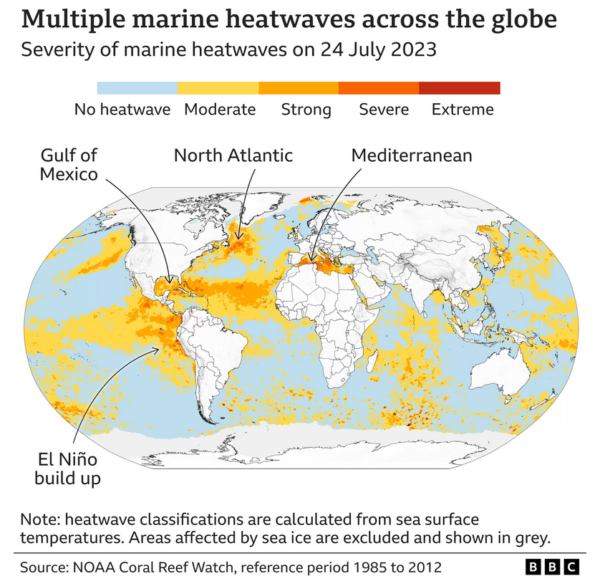The average daily global sea surface temperature beat a 2016 record this week, according to the EU’s climate change service Copernicus. It reached 20.96°C (69.73°F) – far above the average for this time of year.
Warmer waters have less ability to absorb carbon dioxide, meaning more of that planet-warming gas will stay in the atmosphere. And it can also accelerate the melting of glaciers that flow into the ocean, leading to more sea level rise. Hotter oceans and heatwaves disturb marine species like fish and whales as they move in search of cooler waters, upsetting the food chain. Experts warn that fish stocks could be affected.
“The water feels like a bath when you jump in,” says Dr Kathryn Lesneski, who is monitoring a marine heatwave in the Gulf of Mexico for the National Oceanic and Atmospheric Administration. “There is widespread coral bleaching at shallow reefs in Florida and many corals have already died.”
Dr Samantha Burgess, from the Copernicus Climate Change Service, says March should be when the oceans globally are warmest, not August. “The fact that we’ve seen the record now makes me nervous about how much warmer the ocean may get between now and next March,” she says.
“It is sobering to see this change happening so quickly,” says Prof Mike Burrows, who is monitoring impacts on Scottish sea shores with the Scottish Association for Marine Science.
Another El Niño has now started but scientists say it is still weak – meaning ocean temperatures are expected to rise further above average in the coming months.
The broken temperature record follows a series of marine heatwaves this year including in the UK, the North Atlantic, the Mediterranean and the Gulf of Mexico. “The marine heatwaves that we’re seeing are happening in unusual locations where we haven’t expected them,” says Burgess.
To read the full BBC article click here.

